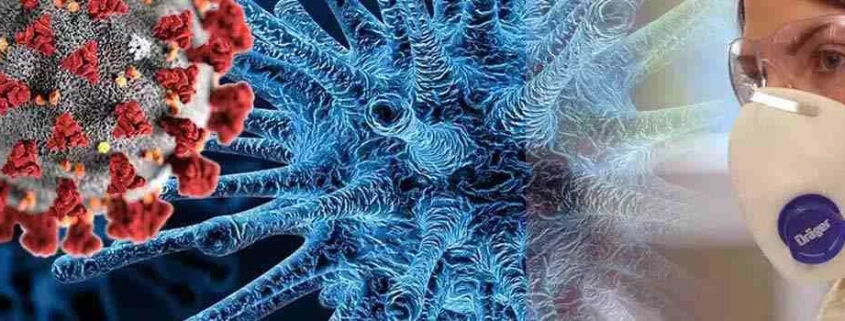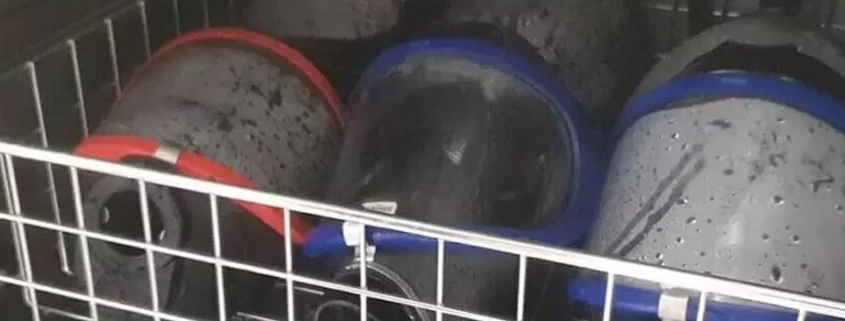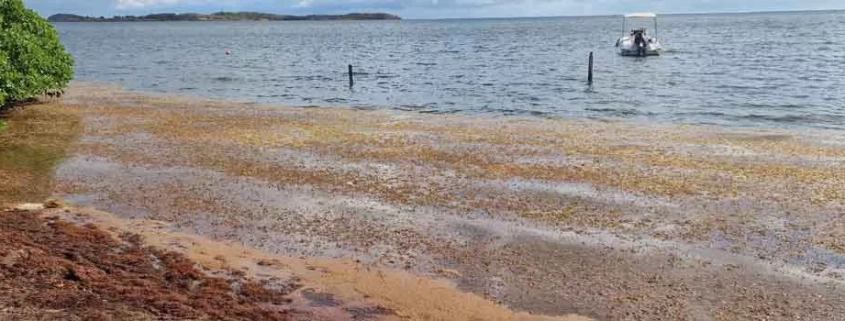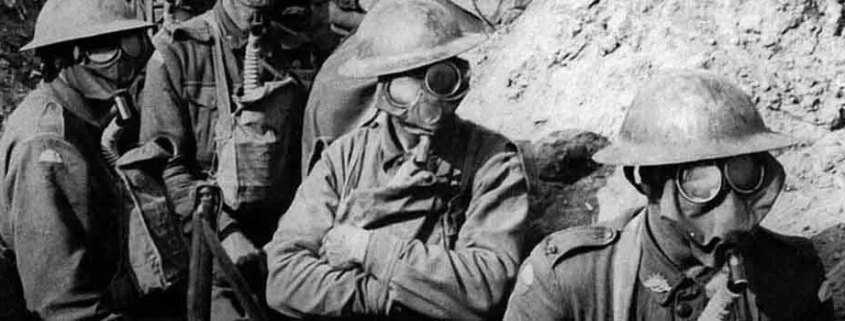Hydrogen peroxide It is a colorless liquid usually found in aqueous solutions. Conceived by chemist Louis Jacques Thénard in 1818, it resulted from the reaction of barium peroxide with nitric acid. It was then cured with hydrochloric acid and then sulfuric acid.
The disinfectant properties of hydrogen peroxide make it a frequently used product in the medical or pharmaceutical industry. Hydrogen peroxide addresses the need for sterilization and biodecontamination of reusable instruments in research laboratories and pharmaceutical manufacturing facilities. However, the use of this chemical element poses some dangers and requires gas detection and respiratory protection equipment.
Disinfection and biological decontamination with hydrogen peroxide
Hydrogen peroxide in the medical environment
In the medical world to provide care, prevent infections, and prevent cross-contamination. Sterilization of care equipment is essential. Again disinfection of usable medical equipment with water vapor or It is carried out with hydrogen peroxide. The technique using H2O2 is widely used because using an autoclave (water vapor pressurized hermetic chamber) at high temperatures can damage the material to be sterilized, such as plastic or some complex or fragile medical instruments. For example, hydrogen peroxide disinfection is used for catheters, endoscopes, and surgical instruments.
Hydrogen peroxide sterilization The technique is performed at cold and low pressure by exposing medical equipment to this gas. medical instruments plasma sterilizer Cleaning using , destroys infectious agents quickly and easily (approximately 1 to 2 hours after cleaning the equipment). The instruments to be disinfected are placed in a vacuum chamber and then to evaporated or gaseous H2O2 is subjected to . A hydrogen peroxide plasma phase is produced by an electromagnetic field. It is during this reaction that bacterial cells are destroyed and the instruments are completely sterilized. After ventilation, the chamber can finally be opened and the sterilized material can be reused.
Hydrogen peroxide in the pharmaceutical industry
H2O2 is also used in the pharmaceutical industry biological decontamination It may also be useful for . For many pharmaceutical applications (research, production, control, etc.), contamination risk control is an important issue. These activities, for example the production of sterile medicines, require clean room implementation with reference to the ISO 14644 standard. Therefore the pharmaceutical industry operates controlled atmosphere zones (CAZs) and risks of microbial contamination And biological decontamination processes requires control. These include pharmaceutical manufacturing workshops, stability rooms, clean rooms, transfer rooms, isolators and some warehouses.*
Although the principle of gas disinfection has been known since ancient times (sulfur, arsenic, hydrochloric acid) and after the operation of different gases such as ethylene oxide (ETO) or formaldehyde, today the pharmaceutical industry prefers hydrogen peroxide for bio-decontamination processes of clean areas. Not only is this substance a disinfectant, but food grade H2O2 is the most economical and environmentally friendly of all cleaning materials.
Sterilization of clean rooms hydrogen peroxide fumigation is accomplished by H2O2 evaporation or dispersing a solution in H2O2 aerosol droplets. It is essential to meticulously clean the areas with disinfectant liquid. Hygiene measures include treating a room with automatic disinfection machines to destroy all types of microbial and bacterial contamination present in a room, thereby decontaminating the entire environment. Airborne decontamination procedures It requires high concentrations of hydrogen peroxide (up to 35%) in a room and must be performed in a closed area without any personnel.
Danger of H2O2 in the medical and pharmaceutical industry
Hydrogen peroxide properties
Hydrogen peroxide, CAS 7722-84-1, also known as hydrogen peroxide, is widely used in the medical and pharmaceutical industries. H2O2 is a toxic, corrosive and oxidizing element. Its corrosive and toxic properties make it An excellent biocide for sterilization and bio-decontamination does . The medical and pharmaceutical industries use hydrogen peroxide specifically for its oxidizing properties, which enable it to act as an antiseptic. It is also used in the food industry (packaging sterilization), water purification and the paper industry (pulp bleaching). To protect workers from these dangerous gas properties, French health authorities Established 1ppm OELP (8-hour occupational exposure limit value).
H2O2 hazards in biodecontamination
The use of hydrogen peroxide in the medical and pharmaceutical industries poses a danger to many professionals working in these fields. The use of oxygenated liquid as a sterilization and biological decontamination agent chronic or accidental acute exposure to hazardous concentrations may contain . Malfunction or misuse of machinery, non-compliance with safety procedures or misuse of H2O2 solutions can lead to gas leakage and dangerous health effects in humans.
Chronic exposure to low concentrations of H2O2 causes skin irritation, hair graying, and respiratory irritation. Exposure to high concentrations may cause significant inhalation of hydrogen peroxide vapors, which may lead to severe respiratory distress, loss of consciousness, or fatal systemic poisoning.
Hydrogen peroxide detectors
Hydrogen peroxide detectors for disinfection
Due to the dangers of hydrogen peroxide, safety precautions must be taken in medical and pharmaceutical environments where this gas is used.
Among these safety measures, detecting and monitoring the concentrations of this gas is an indispensable action. Various measuring solutions are used for this purpose:
- Portable H2O2 detector : portable and practical, a portable hydrogen peroxide detector such as the X-am 5100 or the WatchGas PDM+ immediately alerts its user to whatever danger may be. The Portasens III detector enables extremely precise measurement of concentrations and leaks in sterilization equipment with its sampling probe and replaceable sensors.
- Fixed hydrogen peroxide detectors : Ideal for monitoring bio-decontamination processes in the pharmaceutical industry, a fixed B12 detector for the safe area installed in the treatment room and connected to a gas controller outside the room guarantees continuous monitoring of the gas concentration. For ATEX zones, KwikSente Lite and KwikSense Pro (SIL2) are preferred.
- Colorimetric reagent tubes : cheap and easy to use, helping to quickly measure the concentration of these substances, for example after a decontamination process, to dispel any doubts before entering a treated room. Whether Gastec reagent tubes or Dräger tubes, colorimetric tubes are precise, economical devices that do not require special skills.
- Gas detectors equipped with a sampling pump: Highly appreciated by industry, laboratories, water treatment, pollution control facilities and the semiconductor industry. The SI-H100 gas detector with integrated sampling pump captures and analyzes toxic substances from up to 30 meters away.
Respiratory protective equipment for biodecontamination
Hydrogen peroxide (H2O2) decontamination, strict safety precautions and appropriate respiratory protection equipment requires . Whether for disinfection of industrial furniture in the pharmaceutical industry or for use in emergency interventions, a range of devices are required to ensure worker safety.
Biodecontamination using hydrogen peroxide vapor is a very effective method to eliminate harmful microorganisms and residues in controlled contamination environments such as clean rooms and laboratories. However, this method presents significant health risks if inhaled, such as skin burns and irreparable respiratory damage. for H2O2 occupational exposure limit (OEL) is usually set at 1 ppm, highlighting the need to rigorously monitor exposure levels.
The daily use of hazardous substances in the pharmaceutical industry exposes workers to the risk of contamination. Residues and microorganisms can affect employee health, product quality and hygiene. To avoid these risks, workers must wear special PPE, such as hazmat suits and full-face masks connected to respirators. For example, Dräger offers appropriate respiratory protection with the X-Plore 6300 full-face mask fitted with the ABEK2Hg-P3 cartridge or the X-Plore 8000 powered air purifier with a filter of the same type for long-term operation and combined with various facepieces to H2O2 vapors Provides effective protection against.
When personnel must work in environments with high H2O2 concentration, appropriate respiratory protection equipment It is vital to use . Working in controlled environments requires an air supply system to provide a constant flow of breathable air. In an emergency, a self-contained breathing apparatus (for maximum protection) SCBA) is required. Additionally, to ensure quick and safe evacuation Emergency evacuation devices, such as self-rescue masks, should be available.
Finally, in addition to respiratory equipment, HAZMAT suits Other such as (CHEM1, CHEM3, CPS 5800) category 3 PPE is necessary . Made from durable materials, these garments insulate the body and prevent contact with hydrogen peroxide and other hazardous substances.










